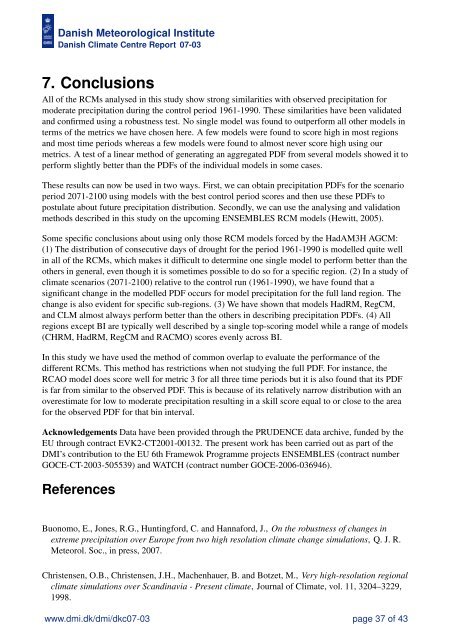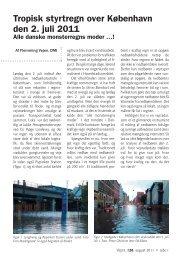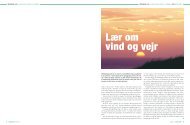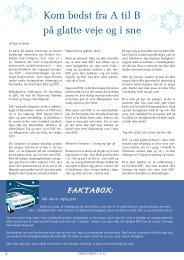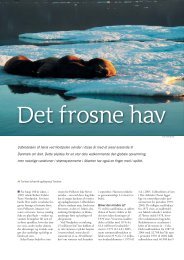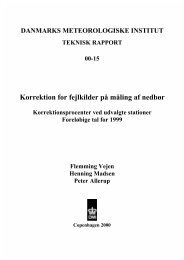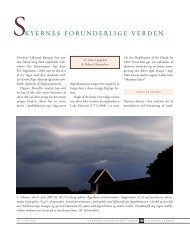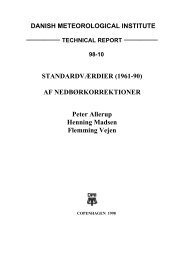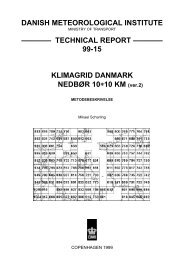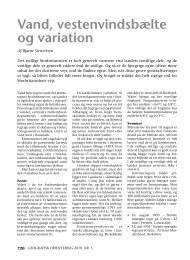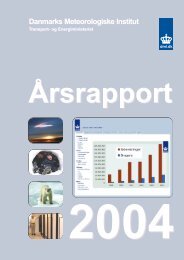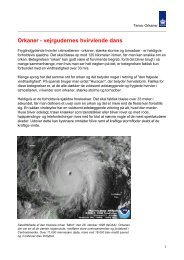Danish Meteorological Institute - DMI
Danish Meteorological Institute - DMI
Danish Meteorological Institute - DMI
You also want an ePaper? Increase the reach of your titles
YUMPU automatically turns print PDFs into web optimized ePapers that Google loves.
<strong>Danish</strong> <strong>Meteorological</strong> <strong>Institute</strong><br />
<strong>Danish</strong> Climate Centre Report 07-03<br />
7. Conclusions<br />
All of the RCMs analysed in this study show strong similarities with observed precipitation for<br />
moderate precipitation during the control period 1961-1990. These similarities have been validated<br />
and confirmed using a robustness test. No single model was found to outperform all other models in<br />
terms of the metrics we have chosen here. A few models were found to score high in most regions<br />
and most time periods whereas a few models were found to almost never score high using our<br />
metrics. A test of a linear method of generating an aggregated PDF from several models showed it to<br />
perform slightly better than the PDFs of the individual models in some cases.<br />
These results can now be used in two ways. First, we can obtain precipitation PDFs for the scenario<br />
period 2071-2100 using models with the best control period scores and then use these PDFs to<br />
postulate about future precipitation distribution. Secondly, we can use the analysing and validation<br />
methods described in this study on the upcoming ENSEMBLES RCM models (Hewitt, 2005).<br />
Some specific conclusions about using only those RCM models forced by the HadAM3H AGCM:<br />
(1) The distribution of consecutive days of drought for the period 1961-1990 is modelled quite well<br />
in all of the RCMs, which makes it difficult to determine one single model to perform better than the<br />
others in general, even though it is sometimes possible to do so for a specific region. (2) In a study of<br />
climate scenarios (2071-2100) relative to the control run (1961-1990), we have found that a<br />
significant change in the modelled PDF occurs for model precipitation for the full land region. The<br />
change is also evident for specific sub-regions. (3) We have shown that models HadRM, RegCM,<br />
and CLM almost always perform better than the others in describing precipitation PDFs. (4) All<br />
regions except BI are typically well described by a single top-scoring model while a range of models<br />
(CHRM, HadRM, RegCM and RACMO) scores evenly across BI.<br />
In this study we have used the method of common overlap to evaluate the performance of the<br />
different RCMs. This method has restrictions when not studying the full PDF. For instance, the<br />
RCAO model does score well for metric 3 for all three time periods but it is also found that its PDF<br />
is far from similar to the observed PDF. This is because of its relatively narrow distribution with an<br />
overestimate for low to moderate precipitation resulting in a skill score equal to or close to the area<br />
for the observed PDF for that bin interval.<br />
Acknowledgements Data have been provided through the PRUDENCE data archive, funded by the<br />
EU through contract EVK2-CT2001-00132. The present work has been carried out as part of the<br />
<strong>DMI</strong>’s contribution to the EU 6th Framewok Programme projects ENSEMBLES (contract number<br />
GOCE-CT-2003-505539) and WATCH (contract number GOCE-2006-036946).<br />
References<br />
Buonomo, E., Jones, R.G., Huntingford, C. and Hannaford, J., On the robustness of changes in<br />
extreme precipitation over Europe from two high resolution climate change simulations, Q. J. R.<br />
Meteorol. Soc., in press, 2007.<br />
Christensen, O.B., Christensen, J.H., Machenhauer, B. and Botzet, M., Very high-resolution regional<br />
climate simulations over Scandinavia - Present climate, Journal of Climate, vol. 11, 3204–3229,<br />
1998.<br />
www.dmi.dk/dmi/dkc07-03 page 37 of 43


